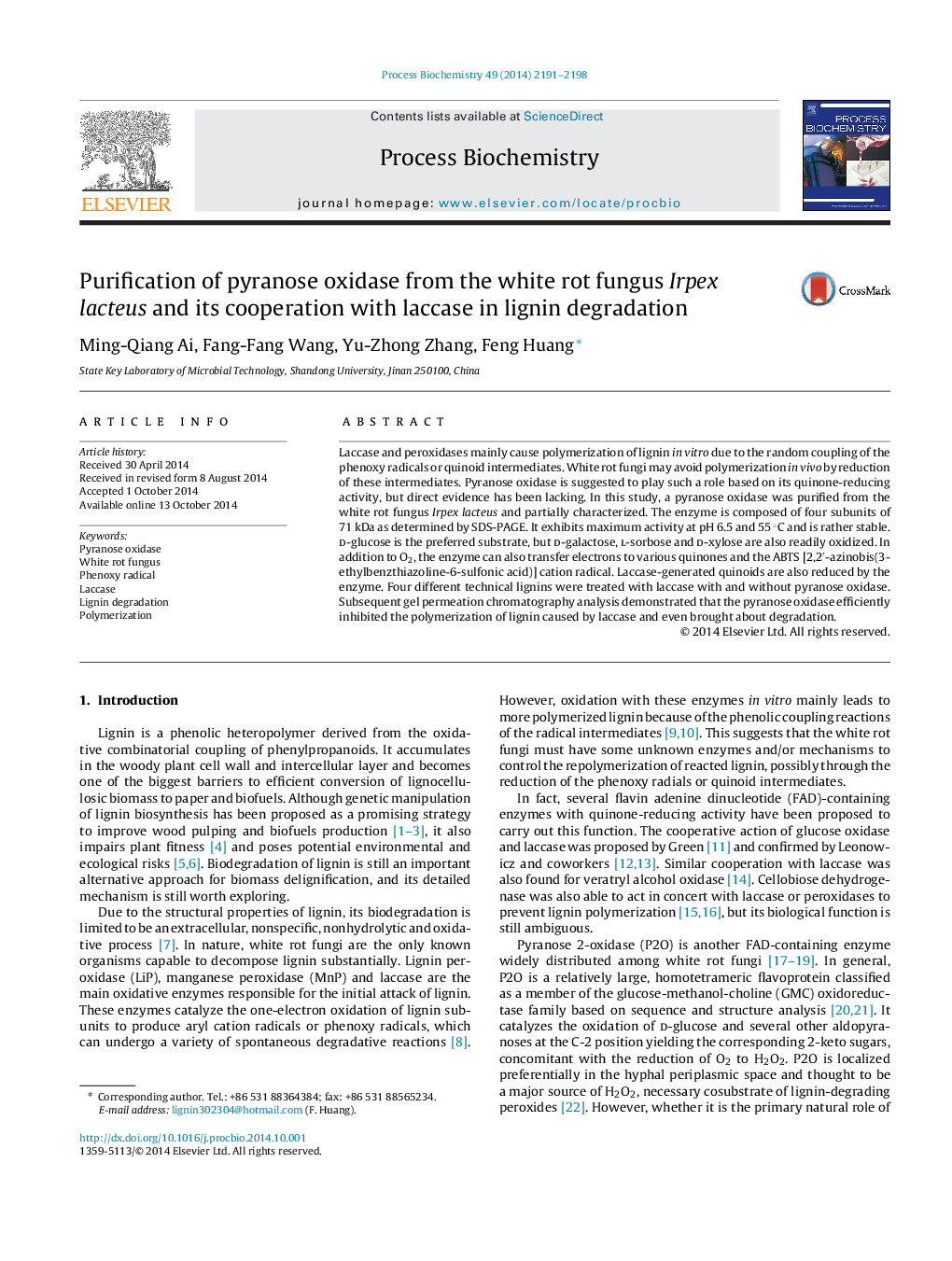| Article ID | Journal | Published Year | Pages | File Type |
|---|---|---|---|---|
| 10235304 | Process Biochemistry | 2014 | 8 Pages |
Abstract
Laccase and peroxidases mainly cause polymerization of lignin in vitro due to the random coupling of the phenoxy radicals or quinoid intermediates. White rot fungi may avoid polymerization in vivo by reduction of these intermediates. Pyranose oxidase is suggested to play such a role based on its quinone-reducing activity, but direct evidence has been lacking. In this study, a pyranose oxidase was purified from the white rot fungus Irpex lacteus and partially characterized. The enzyme is composed of four subunits of 71 kDa as determined by SDS-PAGE. It exhibits maximum activity at pH 6.5 and 55 °C and is rather stable. d-glucose is the preferred substrate, but d-galactose, l-sorbose and d-xylose are also readily oxidized. In addition to O2, the enzyme can also transfer electrons to various quinones and the ABTS [2,2â²-azinobis(3-ethylbenzthiazoline-6-sulfonic acid)] cation radical. Laccase-generated quinoids are also reduced by the enzyme. Four different technical lignins were treated with laccase with and without pyranose oxidase. Subsequent gel permeation chromatography analysis demonstrated that the pyranose oxidase efficiently inhibited the polymerization of lignin caused by laccase and even brought about degradation.
Related Topics
Physical Sciences and Engineering
Chemical Engineering
Bioengineering
Authors
Ming-Qiang Ai, Fang-Fang Wang, Yu-Zhong Zhang, Feng Huang,
